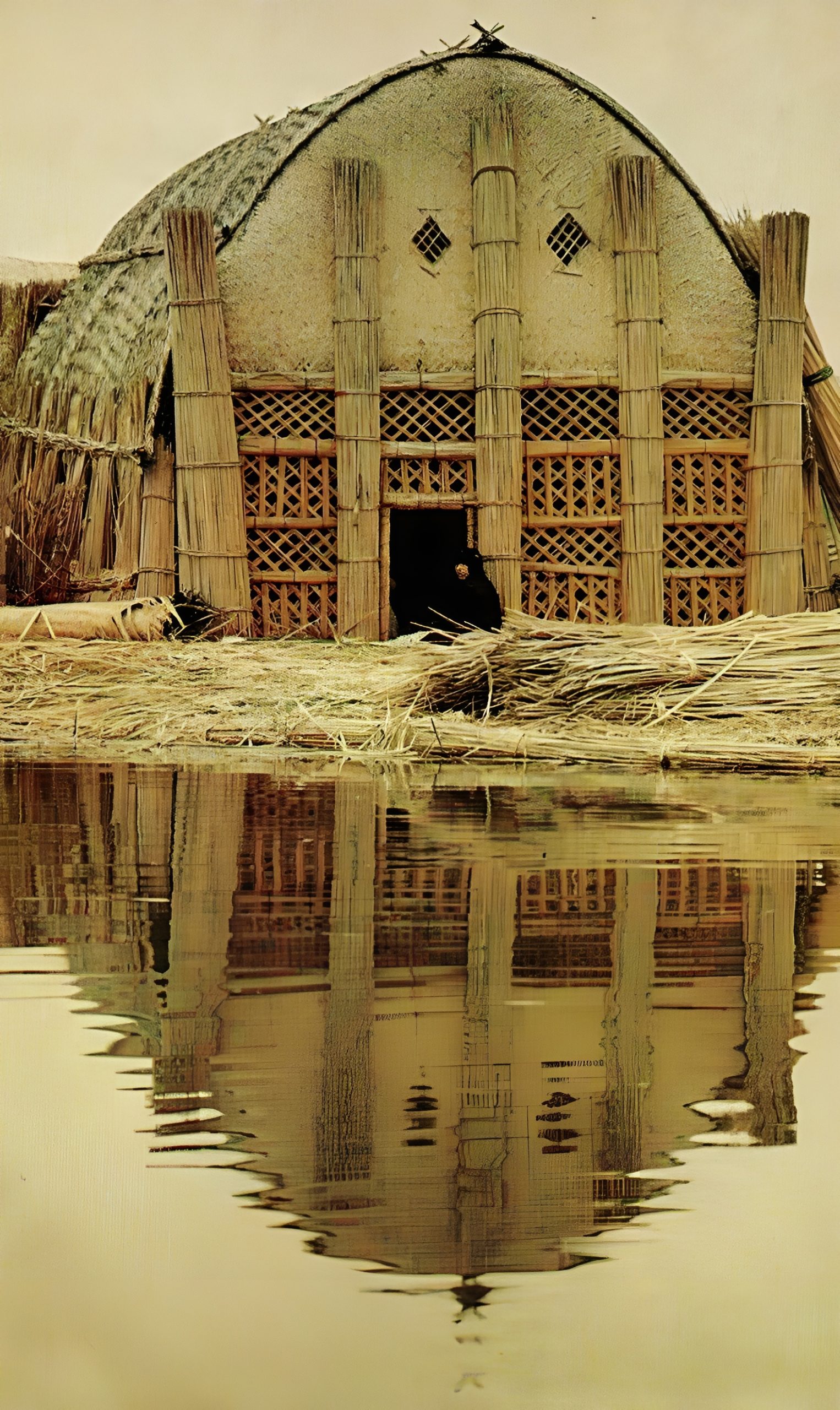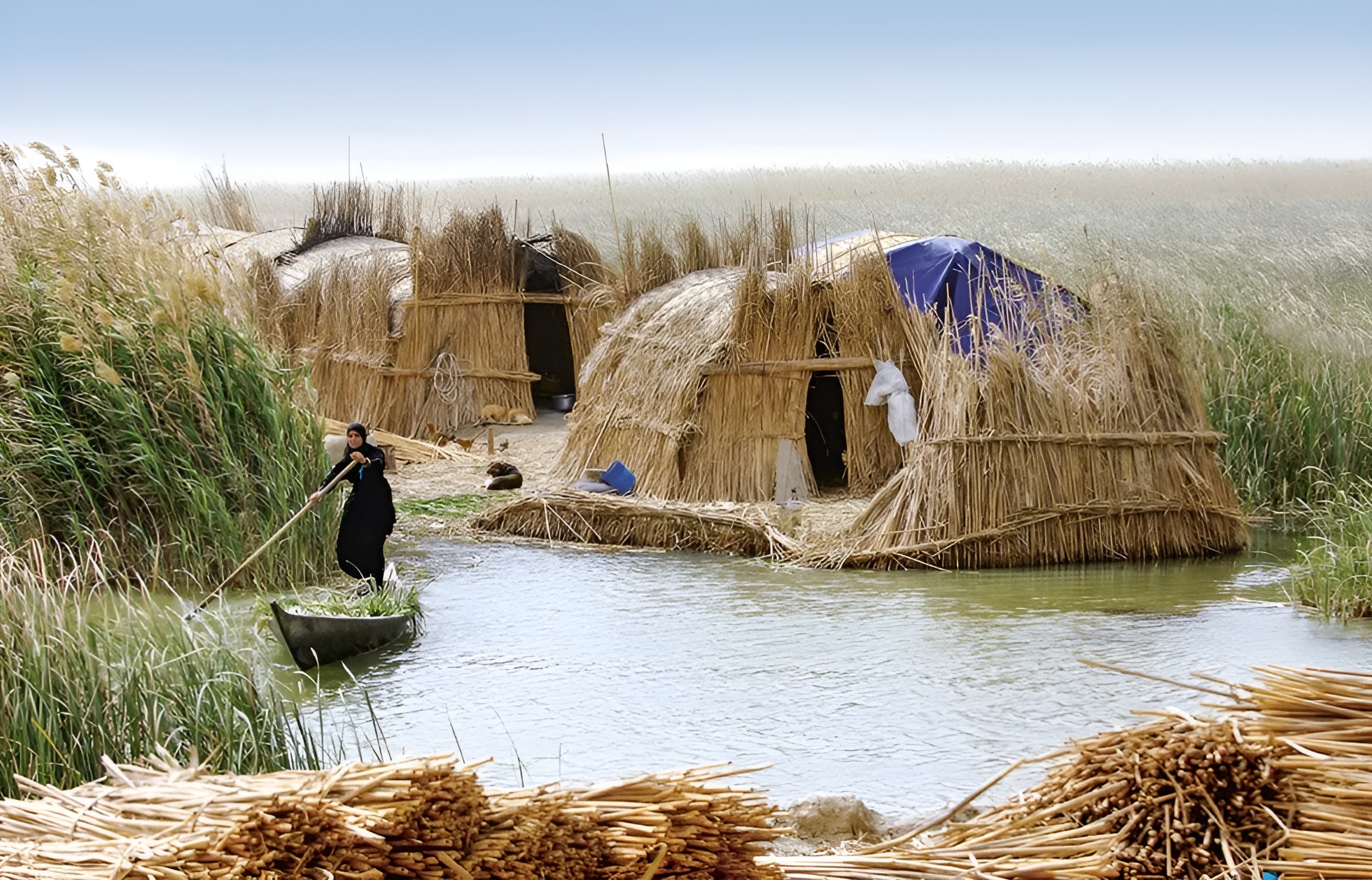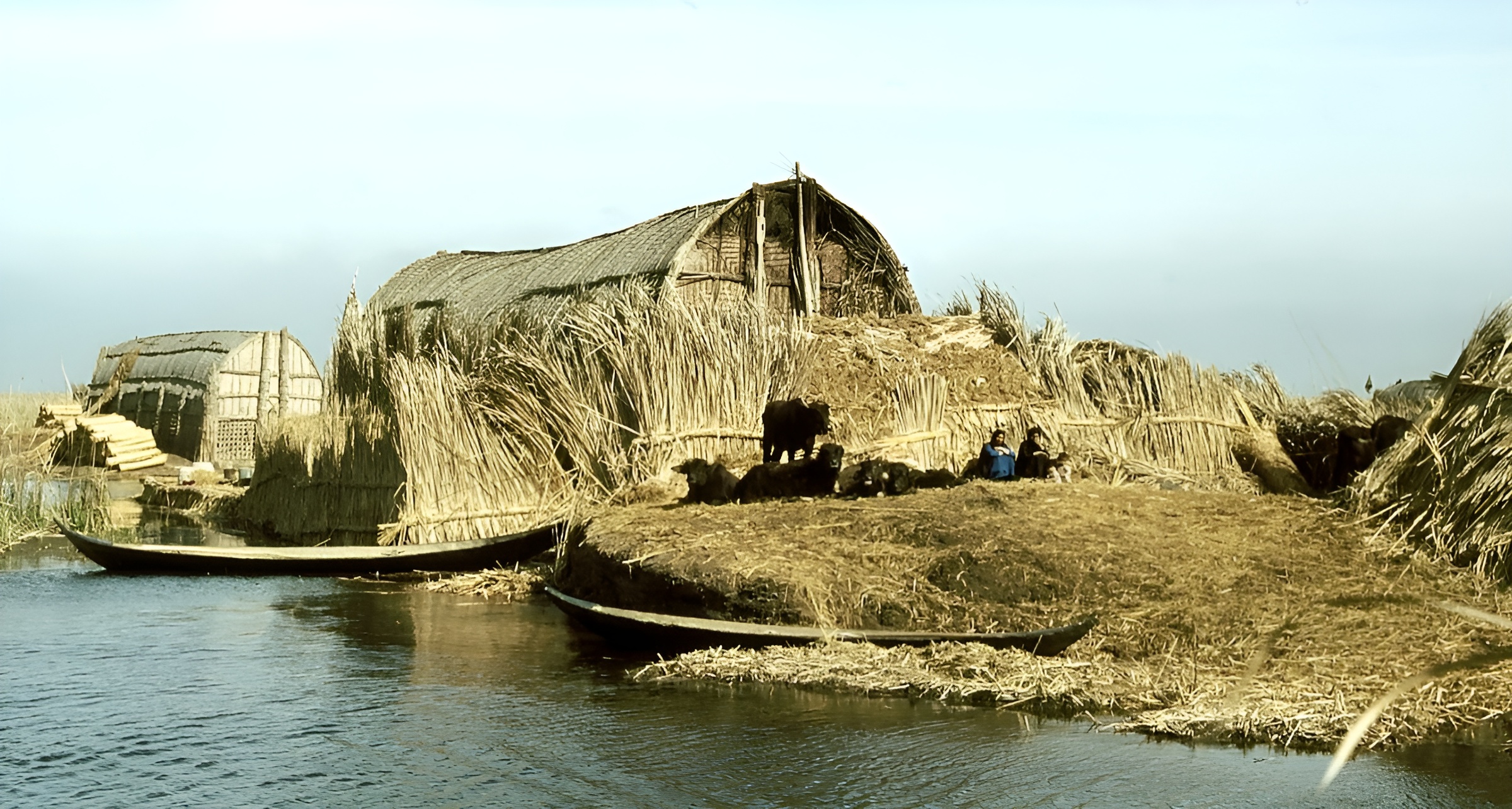The Mesopotamian Venice: The Lost Floating Homes of Iraq.

In the southern marshlands of Iraq, there once existed a unique and ancient way of life. For thousands of years, the Marsh Arabs, also known as the Ma’dan people, thrived in this extraordinary landscape. They built their homes on floating islands made of reeds and established a vibrant culture deeply connected to the surrounding marshes. Sadly, this way of life is now vanishing, and the floating homes of Iraq are being lost to time.

The marshlands of Iraq, known as the Mesopotamian Marshes, were once the largest wetland ecosystem in the Middle East, covering over 15,000 square kilometers. The Marsh Arabs developed a sustainable way of living, relying on fishing, reed harvesting, and water buffalo herding. They created intricate networks of canals, known as amasir, which provided transportation and irrigation throughout the marshes.

The floating homes, or mudhifs, were the heart of the Ma’dan communities. Constructed with reeds, wooden frames, and mud, these unique structures were built to withstand the ever-changing water levels of the marshes. The mudhifs served as communal gathering places, where villagers would come together for socializing, ceremonies, and important decision-making. They represented the Ma’dan’s deep connection to their environment and their reliance on the marshes for their livelihoods.
However, the fate of the Marsh Arabs and their floating homes took a dramatic turn in the late 20th century. During the Iran-Iraq War in the 1980s, the marshlands became a battleground. Saddam Hussein, then the President of Iraq, viewed the marshes as a stronghold for political opposition and ordered a large-scale drainage project. Canals were built, diverting water away from the marshes and causing a massive environmental catastrophe. The once-thriving wetlands rapidly turned into a desolate desert.

As a result, the Ma’dan people were forced to flee their ancestral homes. Many sought refuge in nearby cities, abandoning their traditional way of life. The destruction of the marshes also led to the loss of biodiversity and the displacement of numerous species, including the endangered Iraqi marsh Arab buffalo.
Since the fall of Saddam Hussein’s regime in 2003, efforts have been made to restore the marshlands and revive the Ma’dan culture. International organizations, along with local communities, have worked to refill the canals and reestablish the traditional reed beds. Slowly but steadily, the marshes are showing signs of recovery.

Nevertheless, the floating homes of Iraq have become a rarity. Only a few mudhifs remain, serving as reminders of a bygone era. These resilient structures stand as testaments to the ingenuity and adaptability of the Marsh Arabs, who once flourished in harmony with the natural environment.
Preserving the cultural heritage of the Ma’dan people and restoring the marshlands are essential for the future of Iraq. By protecting these unique ecosystems and reviving the traditional way of life, we can ensure that future generations understand and appreciate the rich history and ecological significance of the floating homes of Iraq.

As visitors and researchers continue to explore the marshes, documenting the remaining mudhifs and the stories of the Marsh Arabs, there is hope that their cultural legacy will endure. The lost floating homes of Iraq serve as a poignant reminder of the fragility of our planet’s ecosystems and the urgent need to protect and preserve our natural and cultural heritage for generations to come.



